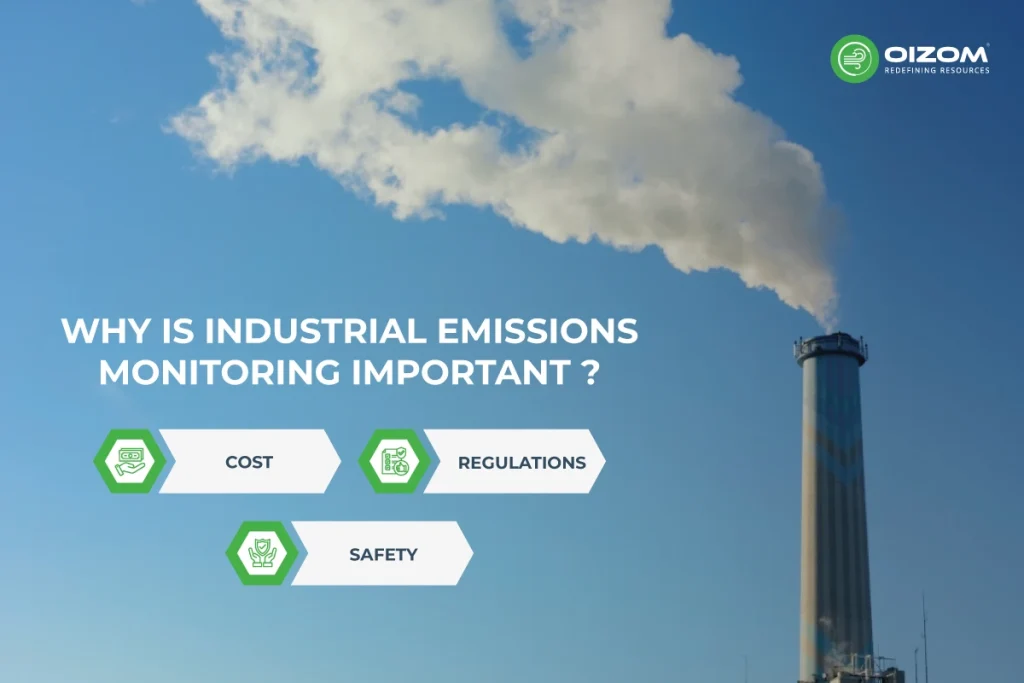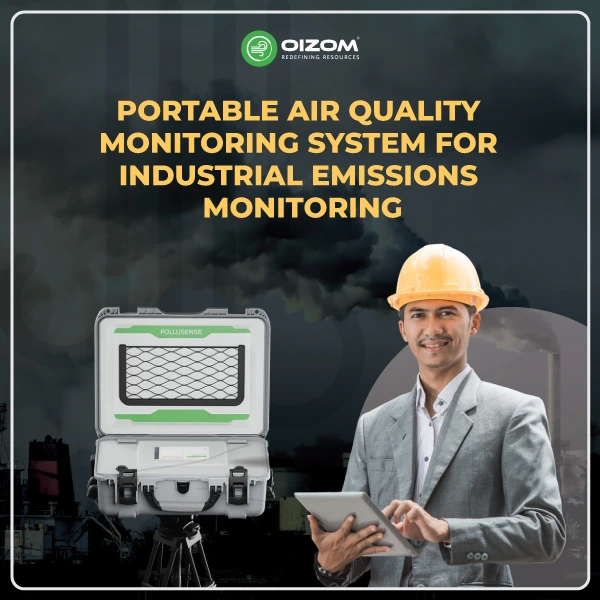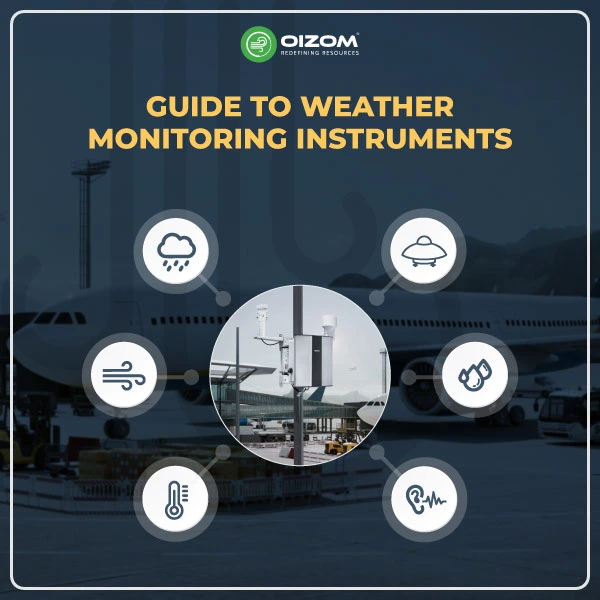10 Key Takeaway Points
- Impact of Industrial Emissions: Industrial emissions cause health risks like asthma and respiratory diseases and contribute to environmental issues like climate change and acid rain.
- Need for Monitoring: Monitoring emissions is crucial to understanding and managing their impact on health and the environment.
- Portable Monitors for Real-Time Data: Portable air quality monitors provide real-time data on pollutants such as particulate matter and harmful gases.
- Flexibility of Portable Monitors: These devices are easy to move across locations, making them ideal for tracking pollution hotspots and adapting to changes.
- Regulatory Compliance: Portable monitors help industries meet environmental standards and avoid penalties.
- Features of Portable Monitors: Wireless connectivity allows for easy data transfer and analysis on digital platforms.
- Cost-Effective Solution: Portable monitors are a more economical option for air quality management than fixed systems.
- Addressing Limitations: While challenges like calibration and battery life exist, solutions like Oizom Pollusense overcome these with reliable features.
- Ensuring Workplace Safety: Portable monitors contribute to safer environments by enabling early detection and response to harmful pollutants.
- Support for Environmental Management: Portable systems aid in studying emission patterns and mitigating industrial air pollution effectively.
Portable air quality monitoring system for industrial emissions monitoring
Industrial air pollution affects everyone, no matter where they live or how small their ecological footprint is. Harmful emissions such as CO2 emissions from factories, mines, and transportation not only worsen air quality but also lead to serious health issues like asthma, respiratory diseases, and even cancer. Did you know this? Air pollution is the largest external threat to human health worldwide. On top of that, they contribute to global problems like climate change and acid rain. In India, rapid industrialization has made this issue more urgent, with pollution levels climbing steadily.
To tackle this, monitoring emissions is crucial, and Understand How to use portable air quality monitoring systems will make it easier than ever. These lightweight and compact devices can measure pollutants like particulate matter, sulfur dioxide, and nitrogen oxides wherever needed, offering a flexible and reliable way to manage emissions. Unlike fixed systems, they’re easy to move around, making it simpler for industries to stay compliant and take meaningful steps to reduce their impact. In this blog, we’ll dive into how portable air quality monitors are helping industries address pollution and work toward a sustainable future.

Role of portable air quality monitoring systems in ensuring compliance and environmental safe
In 2014, the Central Pollution Control Board (CPCB) mandated the installation of CEMS in 17 categories of highly polluting industries and common pollution control facilities. However, despite this mandate, CEMS data has yet to be fully utilized for regulatory and compliance purposes due to concerns about its reliability.
Portable air quality monitoring systems are essential for ensuring compliance with environmental regulations and maintaining a safer environment. These systems provide industries with real-time, accurate data on particulate matter, sulfur dioxide, and nitrogen oxides. This data allows industries to monitor their emissions closely, ensuring they meet stringent regulatory standards set by environmental agencies.
Ensuring compliance is crucial for avoiding hefty fines, maintaining operational permits, and upholding a responsible corporate image. Portable systems make this process more accessible and flexible by allowing industries to monitor emissions across various locations and adapt quickly to regulatory changes. They also help identify potential non-compliance issues early, enabling swift corrective actions.
Why is Industrial Emissions Monitoring Important?

Industrial emissions monitoring is crucial for safeguarding public health, protecting the environment, and ensuring regulatory compliance. Industries release particulate matter, sulfur dioxide, and nitrogen oxides, which can harm human health, causing respiratory issues, cardiovascular diseases, and other long-term health conditions. Monitoring emissions helps identify and control these harmful pollutants, reducing their impact on communities.
From an environmental perspective, emissions monitoring is vital for minimizing the damage caused by air pollution, such as acid rain, climate change, and ecosystem degradation. It enables industries to track pollution levels and take corrective actions to protect biodiversity and natural resources.
Additionally, emissions monitoring ensures compliance with environmental regulations, helping industries avoid fines and maintain operational licenses. It also supports sustainability goals, showcasing an organization’s commitment to reducing its carbon footprint. Below, we will discuss three main reasons why emission monitoring is important.
- Cost: The first thing to consider is cost reduction. Emissions monitoring isn’t a process that earns money. Instead, its value prevents you from losing the money you’ve earned. For heavy industry, that means keeping your plants or factories from being fined or cited for violating regulations. In this respect, emissions monitoring is particularly important because of the broad spectrum of penalties that can be incurred by violating regulations. For homes and families, being aware of your emissions helps reduce energy costs.
- Regulations: It is also important to remember that the landscape of emissions laws is continually evolving. Knowing where your emissions fall within the scope of current rules allows you to react appropriately, including predicting future changes.
- Safety: Finally, and probably most crucially, being able to manage emissions and pollution so that your house or facility is a clean and healthy place to improve the quality of life for your employees and family while also minimizing your environmental impact.
Oizom Pollusense is your go-to solution for monitoring industrial emissions. Its real-time data capabilities make it essential for EHS air quality monitoring, ensuring your workplace stays compliant and adopts a holistic approach. It is compact, durable, and portable, delivering accurate Gas and PM data for informed decisions.
Working Mechanism of Portable Air Quality Monitors for Industrial Emissions
Air quality monitoring systems, such as low-cost sensors and portable devices, can be placed around industrial sites to assess the influence of these operations on the surrounding air quality. Now, let’s talk about portable air quality monitors.
Portable air quality monitors are vital in tracking industrial emissions by detecting and measuring particulate matter (PM2.5 and PM10 and industrial dust), carbon monoxide, and other harmful gases released, such as CO2 and N2O. from various industrial activities like burning of fossil fuels for energy, industrial processes such as manufacturing, and fugitive emissions.
- You might already know about fugitive emissions, but if you’re unsure, no worries—I’m here to break it down for you! Fugitive emission is described as the unintentional and unwanted release, leakage, or emission of gases or vapors from pressure-containing equipment or facilities, as well as components within plants such as valves, piping flanges, pumps, storage tanks, valves, compressors, and so on. Fugitive emissions are frequently referred to as leaks or leakages.
These portable devices work by pulling in air from the environment, using sensors to analyze pollutant levels, and providing real-time data on air quality. The sensors detect particles and gases and then convert the readings into digital data that’s easy to read and understand.
With battery-powered operation and wireless connectivity, these monitors can be moved anywhere around the industry, making them ideal for tracking emissions as they spread. This real-time data helps people understand the air quality around them, enabling timely decisions to protect workers’ health.
How Portable Air Quality Monitors Work
Portable air quality monitors detect and measure pollutants like particulate matter (PM), gases (CO2, NO2, ozone), and environmental factors like temperature and humidity. Using advanced sensors like laser-based scattering ones for PM and electrochemical sensors, NDIR, and PID for gases, they provide real-time air quality data.
What sets them apart is their portability. Unlike fixed monitors, they can be used anywhere, from industrial sites to local neighborhoods, offering flexible and immediate insights. Many also come with wireless connectivity, making it easy to track and analyze air quality on your smartphone or through cloud-based platforms.
Calibration and Maintenance
Cost and maintenance are important factors when choosing an air quality monitor. While safety should never be compromised, budgetary constraints are real. Balancing the necessity for accuracy, responsiveness, and other qualities against available funds might help to guide the decision. However, they always favor critical features over price.
- Portable air quality monitors provide an economical solution for air quality assessment, ensuring affordability without sacrificing key functionalities. By making air quality monitoring more accessible, these devices reduce the need for multiple fixed monitors, offering a flexible and budget-friendly alternative for comprehensive air quality management across multiple locations. However, they may need regular calibration to ensure accuracy.
- Balancing costs and maintenance needs can help you choose the right solution, whether it’s a portable option for daily use.
Applications of Portable Air Quality Monitoring Systems in Industrial Emissions
Having a portable air quality monitoring system for industrial emissions is crucial. After all, measuring is the first step in managing. Without accurate data on air pollutants released by industries, it’s hard to understand the exposure risks or take steps to minimize them. Real-time monitoring provides the insights needed to respond quickly and protect public health.
These portable monitors also help environmental teams study emission patterns, supporting better compliance and future planning. For industries, portable monitors can guide safety measures, ensuring a healthier and safer environment for workers and nearby communities.
Benefits of Using Portable Air Quality Monitors in Industrial Settings
Portable air quality monitors are a practical solution for industrial settings, offering flexibility and quick insights into emissions. Unlike fixed systems, these compact devices can be moved easily to monitor different areas, helping identify pollution hotspots and ensure compliance with regulations.
They provide real-time data on pollutants like gases and particulate matter, enabling industries to act fast to protect workers and maintain safety. These monitors are also cost-effective and ideal for temporary checks or routine assessments.
With features like wireless connectivity, data can be accessed and analyzed easily on smartphones or cloud platforms. In short, portable monitors are a smart, easy-to-use tool for keeping air clean and workplaces safe.
Challenges and Limitations of Portable Air Quality Monitoring Systems
While portable air quality monitors offer flexibility and convenience, they do come with certain limitations. One key challenge is sensor accuracy in extreme environments. Factors like high humidity, temperature changes, or industrial dust can affect sensor performance, requiring regular calibration to ensure reliable data.
Battery life can also be a limitation. Although these devices are equipped with rechargeable batteries, they may need frequent recharging during long-term monitoring, especially in remote locations without access to power sources. However, with Pollusense, you don’t have to worry! It’s designed with a long-lasting battery that keeps going for up to 24 hours, ensuring uninterrupted monitoring of environmental parameters.
Data storage can pose a challenge for some portable air quality monitors, as limited onboard storage often requires frequent data transfers or consistent internet access for cloud-based storage. With Pollusense, users don’t need to worry. It comes equipped with 16GB of internal storage, allowing for 90 days of continuous data logging, ensuring reliable data capture without constant transfers or connectivity.
Conclusion
Monitoring the air quality around industrial operations is essential for managing their impact on health and the environment. Industrial emissions contribute to serious issues like acid rain, climate change, and health risks. With tools like Oizom Pollusense, industries can access real-time data to identify and mitigate pollution effectively.
By combining advanced air pollution control technologies with reliable monitoring solutions like Pollusense, industries can take meaningful steps to protect nearby communities, reduce environmental degradation, and promote sustainability. Investing in such solutions ensures a healthier, safer, and more sustainable future for all. We need to reduce industrial emissions and protect our environment. This takes a team effort from governments, businesses, and everyone else.






